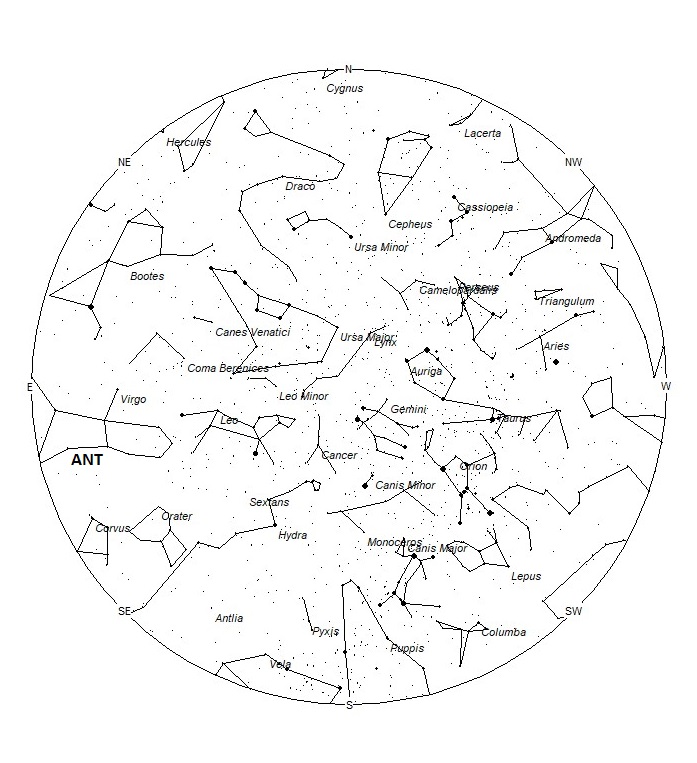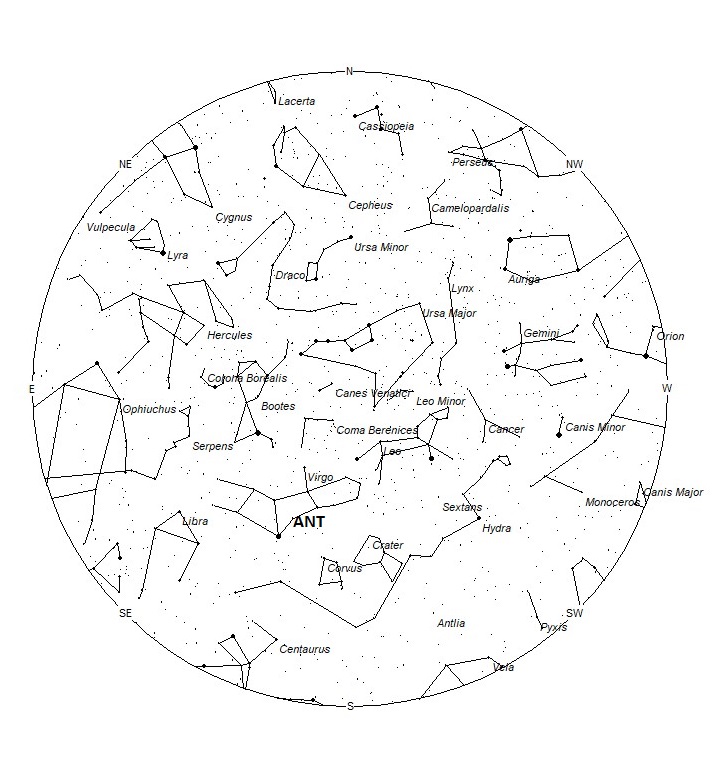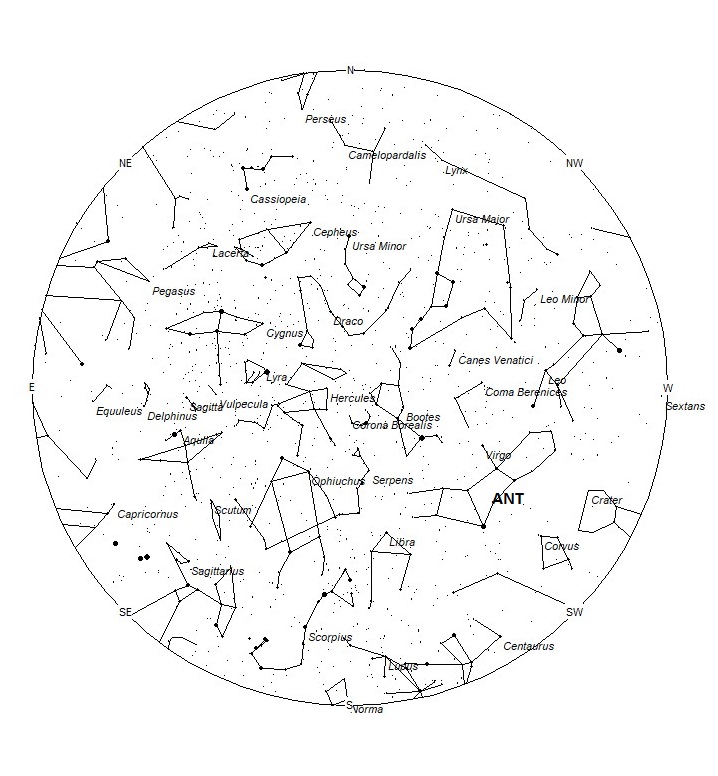
During this period the moon reaches its new phase on Tuesday March 24th. At this time the moon lies near the sun and will be invisible at night. This is the best time of the month to view meteor activity as there will be no lunar interference. The estimated total hourly meteor rates for evening observers this week is near 2 for those viewing from the northern hemisphere and 3 for those located south of the equator. For morning observers, the estimated total hourly rates should be near 7 as seen from mid-northern latitudes (45N) and 10 as seen from tropical southern locations (25S). The actual rates will also depend on factors such as personal light and motion perception, local weather conditions, alertness and experience in watching meteor activity. Note that the hourly rates listed below are estimates as viewed from dark sky sites away from urban light sources. Observers viewing from urban areas will see less activity as only the brighter meteors will be visible from such locations.
The radiant (the area of the sky where meteors appear to shoot from) positions and rates listed below are exact for Saturday night/Sunday morning March 21/22. These positions do not change greatly day to day so the listed coordinates may be used during this entire period. Most star atlases (available at science stores and planetariums) will provide maps with grid lines of the celestial coordinates so that you may find out exactly where these positions are located in the sky. A planisphere or computer planetarium program is also useful in showing the sky at any time of night on any date of the year. Activity from each radiant is best seen when it is positioned highest in the sky, either due north or south along the meridian, depending on your latitude. It must be remembered that meteor activity is rarely seen at the radiant position. Rather they shoot outwards from the radiant, so it is best to center your field of view so that the radiant lies at the edge and not the center. Viewing there will allow you to easily trace the path of each meteor back to the radiant (if it is a shower member) or in another direction if it is a sporadic. Meteor activity is not seen from radiants that are located below the horizon. The positions below are listed in a west to east manner in order of right ascension (celestial longitude). The positions listed first are located further west therefore are accessible earlier in the night while those listed further down the list rise later in the night.
These sources of meteoric activity are expected to be active this week.
.
The center of the large Anthelion (ANT) radiant is currently located at 12:28 (187) -04. This position lies in western Virgo, 3 degrees southwest of the famous 3rd magnitude double star known as Porrima (gamma Virginis). Due to the large size of this radiant, Anthelion activity may also appear from Corvus as well as Virgo. This radiant is best placed near 0200 local standard time (LDST), when it lies on the meridian and is located highest in the sky. Rates at this time should be near 2 per hour no matter your location. With an entry velocity of 30 km/sec., the average Anthelion meteor would be of slow velocity.
As seen from the mid-northern hemisphere (45N) one would expect to see approximately 3 sporadic meteors per hour during the last hour before dawn as seen from rural observing sites. Evening rates would be near 2 per hour. As seen from the tropical southern latitudes (25S), morning rates would be near 5 per hour as seen from rural observing sites and 2 per hour during the evening hours. Locations between these two extremes would see activity between the listed figures. Morning rates are reduced during this period due to moonlight.
| SHOWER | DATE OF MAXIMUM ACTIVITY | CELESTIAL POSITION | ENTRY VELOCITY | CULMINATION | HOURLY RATE | CLASS |
| RA (RA in Deg.) DEC | Km/Sec | Local Daylight Saving Time | North-South | |||
| Anthelion (ANT) | – | 12:28 (187) -04 | 30 | 02:00 | 2 – 2 | II |
 American Meteor Society
American Meteor Society



This is absolutely beautiful
I’m in Orange county California and I’ve been recording amateur videos on my Android
I cannot believe how often I see meteors
Something is going on. Anyway thank you for sharing
Beautiful nights thanks for posting
Beautiful photo
Just saw two streaks across the sky one right after the other about 4 min apart. From East to West in the Phoenix, Arizona sky about 11:15pm 3/25/2020
Was wondering if it was a meteor shower, that asteroid breaking up, satellites that followed each other almost perfectly or anything else at this point. Just wanted to share my comments!
Frankie P
Frank and All,
Satellites are not visible this time of year near 11:15pm. They were most likely random meteors that happened to occur close together.
We have sighted fire ball in the sky near kashmir India during 11:35 IST. Do we any report of that . Please share if there any update regarding that.
Around 6 ish this morning. My husband seen star looking this about 10 or so. They were following each other in a line and at a certain spot that started to disappear one at a time. Could this be a meter or something else? I dont think they were streaks just following each other.
Tonya and All,
No these were not meteors. They sound more like Star Link satellites which are launched in large groups and often follow each other like a string of beads in the sky.
We counted about 5 very bright meteors yesterday March 26 before sundown. We’re in Philadelphia so we barely get to see stars. I have never seen meteors that big and bright before. We actually thought we were under attack. I have heard no other reports though. We were facing west.